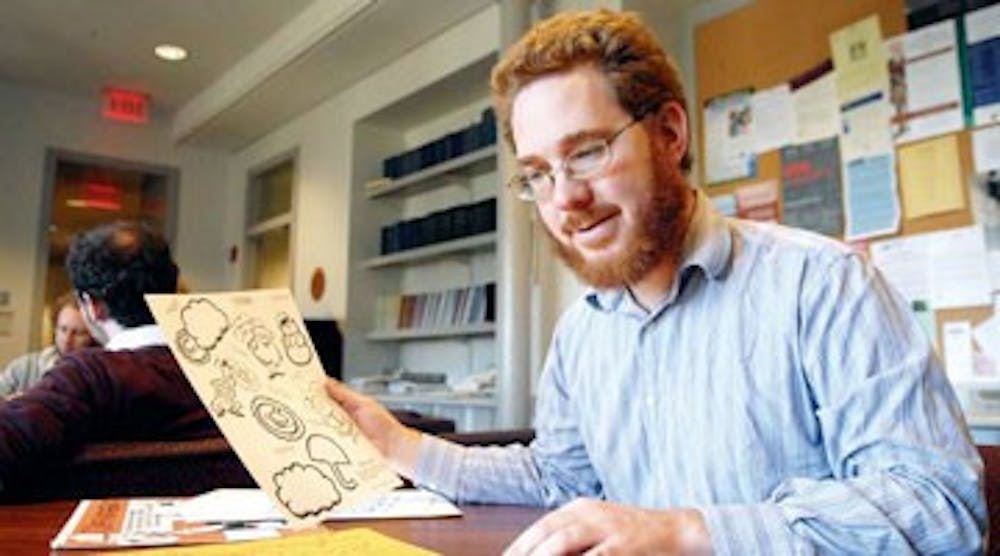What do you get when you combine comic books, TV weathermen and the military?
The premise for a vaguely funny joke? Possibly. But according to sixth-year graduate student Roger Turner, these three seemingly incongruous institutions actually have a shared history, dating back to the First World War.
According to Turner, a member of the History and Sociology of Science graduate group, pilots were taught basic meteorology and weather mechanics using comic book cartoons.
"Because everyone understood the language of comics, it made sense to teach these technical, difficult subjects using comic books," Turner explained.
Later, the same meteorologists who developed the military training manuals became the first television weathermen and used the same pictorial depictions in their weather reports up until the 1970s.
"I just started collecting stuff related to aeronautical meteorology," Turner said of his collection of around 300 military training manuals and weather reports, almost all culled from eBay auctions. The collection was started about five years ago.
Like comics books, many of the manuals used recurring characters and personified objects, from happy planes to angry clouds.
"It was common to have a [satirical] character who the pilot could identify with," Turner said. "It creates a little distance where you can laugh at this character but still recognize a little of yourself in them."
One of Turner's favorite anthropomorphized representations comes from a manual warning pilots against flying in a storm. The clouds, which appear to be boxing, "are kind of aggressive and wanting to fight the planes," he explained.
By the 1970s, according to Turner, as news reports became more serious and comics were increasingly seen as "low culture," cartoons were pushed aside in favor of less frivolous graphics.
However, Turner furthered, "even in today's weather graphics, [we] see echoes of the language of comic art, but now it's not as funny and not presented as purely entertainment."
Turner's findings, an outgrowth of his dissertation entitled "Weathering Heights: Aeronautical Meteorology and Instructional Science" was featured in the July issue of SAS Frontiers, an online magazine about the research and accomplishments of faculty and students in the School of Arts and Sciences.
Aside from entertainment value, Turner's discovery has educational value as well.
"It explains how we've come to understand weather, the ways that machines and different kinds of technologies affect our relationship to the weather," he said.
"If we want to understand the public policy of climate change . we have to understand how our society's response to weather has changed."



